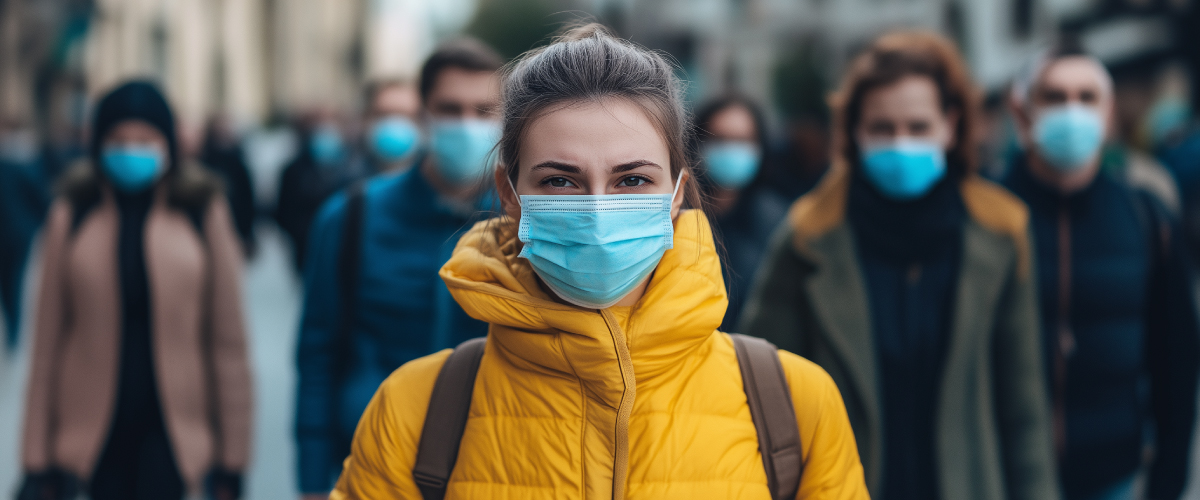What Post-COVID-19 America Will Look Like
The COVID-19 pandemic has irrevocably altered the fabric of American society. It has reshaped everything from our urban landscapes to how we work and play.
In the months and years ahead, you may thrive—or even get rich—if you’re selling weed edibles or become a video game star. However, if you own a mall, the golden days have passed. And regardless of your situation, prepare for higher prices on the things you buy.
Welcome to the Post-COVID-19 Economy
We’re not there yet, but it’s only a matter of time before vaccines against the virus are widely deployed, we achieve herd immunity, or some combination of both. When we do arrive, America will have transformed into a very different place.
The Decline of Big Cities
Take big cities like New York, for instance. Only a few months ago—pre-COVID-19—the Big Apple was experiencing an economic boom. As of this writing in summer 2020, the streets are a dystopian scene of shuttered businesses and mounting piles of trash. Murders have increased by 50%, and even the most affluent neighborhoods have seen steep rises in crime. Business leaders warn that up to one-third of city businesses—more than 75,000 in total—may never reopen.
These developments will have far-reaching consequences in our interconnected world. New York’s wealthiest residents have already fled to the suburbs, which will decimate the city’s tax base. Those who can’t afford to leave will find themselves in an increasingly depopulated city marked by crumbling infrastructure and sustained only by minimal government and aid agency support.
City revenues are plunging, even as New York faces an $8.3 billion budget deficit, with even greater shortfalls predicted in the coming years.
A Nationwide Crisis
New York City isn’t the only one at risk. Cities like Chicago, Los Angeles, and many others across the country are also facing severe budget crises. If you want a glimpse of the future for American cities, look no further than Detroit.
Millions of Americans who believed they were immune from layoffs or furloughs will discover that their jobs aren’t safe from this new economic reality. Ironically, healthcare workers face some of the highest risks of job loss. Nurses, physicians, and pharmacists are among the highly trained professionals now finding that their skills aren’t in as high demand as before.
The End of the Mall Era
COVID-19 has accelerated the decline of in-person shopping. The once-mighty mall sector is the most visible symbol of this downturn.
In the mid-1990s, the U.S. had around 1,500 major malls. Thanks to the growing popularity of online shopping, only about 1,000 survive today. In 2017 alone, 105 million square feet of retail space closed—enough to house about 400 Walmart superstores. These massive structures might soon serve as shelters for the tens of millions of Americans facing homelessness as eviction moratoriums at the federal, state, and local levels expire.
Opportunities Amid the Crisis
But it’s not all doom and gloom. Consider the marijuana industry, for instance. It’s booming in the COVID era, with weed-based edibles becoming especially popular as America’s appetite for the War on Drugs continues to fade. A Democratic sweep in the upcoming November 2020 election could lead to federal decriminalization of marijuana and its removal as a Schedule 1 narcotic.
Another industry that’s thriving is online gaming. The online gaming sector generates over $150 billion in revenue. Top players of games like Call of Duty and Fortnite can earn millions annually by becoming video game celebrities.
A Bright Spot for the Auto Industry
The American auto industry also holds potential for recovery. While vehicle sales plummeted nearly 50% during the pandemic’s peak, they’ve rebounded to pre-COVID levels. As lockdowns ease, the reluctance to gather in large groups will likely decrease the demand for public transportation. Many people who once relied on buses, trains, or subways will prefer private vehicles. Those without a car will need to buy one. Furthermore, as people leave densely populated cities for suburban areas, they will increasingly depend on private vehicles for transportation.
The End of Globalization
The pandemic could also signal the end of globalization as we know it. International trade has dropped sharply during the pandemic and may never fully recover. Globalization allowed multinational companies to design supply chains for sourcing at the lowest total costs, even if manufacturing and processing facilities were located thousands of miles away from where products were needed. The assumption was that raw materials, finished goods, and partially finished goods would always be available.
COVID-19 proved that this assumption isn’t always valid. For example, in March and April, there was a significant decline in imports from China, including telecommunications equipment, motor vehicle bodies, and electronics, though supplies are gradually returning. This realization hasn’t gone unnoticed by U.S. manufacturers. As the economy recovers, we can expect supply chains to become more localized, offering substantial opportunities for those who can capitalize on this de-globalization trend.
Inflation: The New Normal
One thing is certain: we’ll all pay more for the goods and services we consume. Retail prices are now surging at an annual rate of over 7%. And those are the official numbers—the actual rate of inflation is likely much higher, as discussed in previous essays.
The government benefits from inflation because it decreases the real value of its massive debts. We’ll see more of it as the concept of “modern monetary theory” gains traction in Washington, D.C.
Inflation can be advantageous if you’re in debt with a fixed-rate mortgage or have a job where your pay increases with rising prices. However, if you’re on a fixed income, inflation is a significant threat. Social Security cost-of-living adjustments, for example, will likely become even less tied to the real inflation rate. The Consumer Price Index, which has been repeatedly revised to understate inflation, will likely be adjusted again.
The same tactics that worked in the 1970s to hedge against inflation are just as relevant today. Precious metals remain a solid investment, even though prices have risen sharply recently. You can also hedge against inflation by investing in tangible assets, starting with buying a home.
Act Now to Secure Your Future
The post-COVID-19 world presents both challenges and opportunities. Whether you’re navigating career changes, adjusting to a new lifestyle, or seeking ways to protect your assets, now is the time to act. Stay informed, be adaptable, and take proactive steps to secure your financial future in this rapidly changing landscape. By thinking ahead and preparing now, you can turn uncertainty into opportunity and ensure your financial freedom.
Need Help?
Since 1984, we’ve helped more than 15,000 customers and clients protect their wealth using proven, low-risk domestic and offshore planning. To find out if our strategies can help safeguard your financial freedom from government overreach, book a free no-obligation call with one of our Associates.



